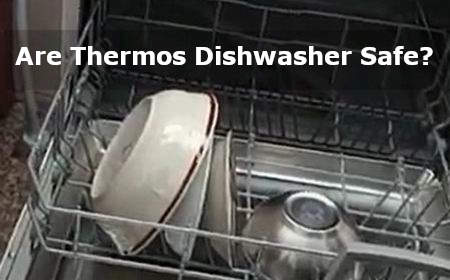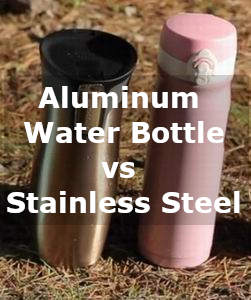
Hydro Flask is a well-known brand of top quality stainless steel vacuum flasks and bottles. They are very suitable for trekking, traveling, and intensive entertainment. However, when it comes to laundry, almost everyone does not understand if a Hydro Flask could be included in a dishwasher.
Dishwasher and Hydro Flask: Tips and Advice
In this memorandum, we have gathered all the important tips and advice from manufacturers and experts on how to maintain a hydro flask. This way, you can extend its life and maintain the quality of the drinks you store in it.
Before we discuss cleaning dishwasher hydraulic flasks, let’s first discuss why this is important and how to take good care of these products.
Why do most people ask this question?
Hydro Flask is a fairly well-known brand of stainless steel products that keep drinks cool and fresh. However, many users ask the question: is it possible to wash a Hydro Flask in a dishwasher?
This is explained by the fact that dishwashers are considered a comfortable and fast way to clean dishes, but not all products have the opportunity to resist the extreme effects this device has.
In addition, the Hydro Flask contains a special coating that guarantees hardness and protection against damage. Therefore, if not rinsed in the dishwasher, the coating may be destroyed, reducing the efficiency of the device.
That is why almost all users of Hydro Flask try to touch their products carefully and are therefore willing to wash them by hand to prevent possible damage.
There are myths about the deadly effects of high temperatures on bottles
Many people are reluctant to put their Hydro Flask in the dishwasher or wash it in hot water because of the myth that high temperatures can kill bottles. However, this is not the case.
The glass, plastic, and stainless steel used in the production of the bottles are resistant to high temperatures without harmful consequences. These materials are reliable, durable, and designed for use in all kinds of standards, including dishwashers.
Of course, automatic dishwashers can cause peeling, scratching, and other unpleasant stains. For this reason, we recommend that bottles be washed carefully when placed in the dishwasher. Additionally, it is important to use only mild detergents to prevent damage to the material.
In general, the deadly effects of high temperatures on hydro flasks are a myth and there is no scientifically proven cause. Therefore, do not be afraid to put your own bottles in the dishwasher or wash them in hot water if necessary.
General recommendations
1. Check the water temperature
Before washing, allow one’s hydraulic flask to cool or heat to room temperature. This will prevent temperature fluctuations and possible damage to the vacuum tube.
2. Use a mild detergent.
Do not use abrasive cleaners or sponges to wash your hydro flask as this may damage the internal coating. You can use mild detergents such as soap and warm water, or specific cleaning agents designed for washing stainless steel.
3. Do not use a dishwasher
Hydro flasks cannot be placed in a dishwasher and should be washed by hand. This way the bottles can be handled with care and will extend their lifespan.
4. Do not use a microwave oven
Do not place your own hydro flask in a microwave oven! This can lead to damage to the bottle and fire.
Types of Hydro Flasks and Dishwasher Details
Depending on the material the hydro flask is made of, is it dishwasher safe or not?
Vacuum flasks and stainless steel bottles with a satin finish (stainless steel) are dishwasher safe. Before assembling them, the caps and rings must be removed from the corks as they are not dishwasher-safe. Additionally, use wash-p and hot water to prevent surface contamination.
Glass bottles can also be done in the dishwasher, but only on a stand dry and medium clean. However, for the life of the glass bottle, it is recommended to wash it by hand.
Bottles with wide mouths and isolated thermo bottles (with vacuum cleaners) may not be dishwasher washable. To maintain the performance and sustainability of these products, they must be washed by hand and not by any other method.
In addition, before washing the hydro flask in the dishwasher, remove all drinking residues, wash the product in hot soapy water, and hand scrub the lid and cork rings daily.
Certain materials must not be included in the dishwasher
Automatic dishwashers are considered a useful and convenient help in the kitchen. However, not all objects can be washed. There are certain materials that are not allowed in dishwashers. Let’s see what they are:
1. Wooden objects
Wood can melt and lose its shape under the influence of high temperatures and moisture. Therefore, signs with wooden handles or cutting boards may not be washed by hand and are not dishwasher safe.
2. Hardware
Metal may stretch and lose its original appearance when washed in a dishwasher. Corrosion and stains will likely be visible on iron kitchen utensils. If you have iron objects, she was by hand to keep their quality longer.
3. Glass work with prints or engravings
Glass objects with patterns or engravings could lose their personal motivation or get stuck in other objects in the dishwasher. As a result, there may be scratches. It is better to clean the glass by hand to ensure that it remains clean and scratch free.
4. Plastic dishes
Plastic can melt at high temperatures, which can lead to cracks and destruction of the object. If there are plastic plates or other plastic objects, they can be washed by hand to avoid damaging the material and its quality.
As a solution, keep in mind that some materials are not dishwasher safe. These objects must be washed by hand to maintain their quality and good condition.
Advantages and Disadvantages of Using a Hydro Flask in Dishwasher
Advantages:
- Saves time and effort of manual cleaning.
- Removes most dirt and bacteria with hot water and specific cleaning products.
- Dishwasher can reach inaccessible spaces inside bottles, simplifying the cleaning process.
Cons:
- Automatic dishwasher has the option of ruining the outside of the hydro flask due to high temperatures and high water pressure.
- Dishwashers can contain aggressive chemicals that can affect the taste and quality of drinks in the bottle.
- Other cooking stains and food scraps in the dishwasher can end up in the hydro flask and negatively affect the quality and taste of the drink.
- Some hydro flask models are not dishwasher safe. Using them together can result in bottle breakage and chemicals in the drink.
Conclusion: Despite the excellent cleaning capabilities of dishwashers, hydraulic flasks should always be cleaned by hand – use soft materials and cleaning agents that are harmless to health.
The most important advantages of using a dishwasher
Saves Time: It takes time and work to clean and wash dishes by hand. Automatic dishwashers reduce cleaning time and take less time.
Hygienic: Dishwashers clean dishes at temperatures of 50 to 70 degrees Celsius. This has killed viruses and bacteria.
Effective in removing plaque and stains: this device offers the possibility to wash dishes with detergent resources and additives in the form of gels, guaranteeing thorough cleaning and removal of plaque and stains.
Preserves the quality and color of the dishes. Washing by hand, even more often, allows the dishes to wear and discolor. In the dishwasher, dishes are washed carefully at a good temperature and do not lose their color.
Water conservation: using a dishwasher reduces water consumption. Water consumption increases significantly because the tap must be held open longer by hand.
Comparison of time and amount of water for hand washing vs. dishwasher
Operation|Defense Dishes|Wash in Dishwasher
Number of dishes| 40| 90
Vice duration (average)| 70 minutes| 10 minutes.
Water consumption (liters)| 60 l.| 10-15 l.
Using the Hydro Flask Dishwasher is a fast, affordable, and more effective way to clean products. Remember, however, that the presence of iron parts in the thermos bottle can damage the device. Consult the user manual before using the dishwasher.
Main disadvantages of using a dishwasher for cleaning
Nearly all vacuum bottle manufacturers believe that dishwasher use can significantly degrade the quality of the casing due to scratches, wear, color changes, and warping in many cases. In addition, the fabric of the casing may be more susceptible to impact.
Damage to O-rings and covers
Many vacuum flasks have O-rings that prevent leakage and provide heat protection. As a general rule, automatic dishwashers cannot destroy O-rings, but it is still recommended not to wash thermos bottles. There are also vacuum flasks with lids that provide secondary protection against leaks and heat retention. These can be damaged by dishwashers.
Bad Cleaning
Modern dishwashers clean very well, but they do not always handle all types of stains. For example, thermos bottles can accumulate many different types of dirt and bacteria, which are not easy to remove. Cleaning clay or glass containers is much easier than cleaning a thermos before it is ready to drink.
Limit temperatures
Exposing a thermos to high temperatures to remove excess dirt and bacteria will only slightly degrade the material. This can occur because thermos bottles are not designed to be exposed to high temperatures continuously and frequently, such as in a dishwasher. This can cause the thermos to overheat, which may affect its quality characteristics.
Dishwashing Tips for Cleaning the Hydro Flask
When using the dishwasher to clean the Hydro Flask, follow these tips
– Before using the dishwasher, check the Instructions for Use to make sure the Hydro Flask is dishwasher-safe.
– If the instructions do not recommend washing the Hydro Flask in the dishwasher, do not take the risk and wash it by hand.
– If you dare to use the dishwasher, place your Hydro Flask in the basket at the top of the dishwasher. This will prevent damage from high water flow and damage from thermal media.
– Select a gentle wash program and turn off the hot compressed air to prevent damage to the Hydro Flask from overheating or high temperatures.
– Use mild detergents and aggressive cleaning agents to prevent damage to the surface of the hydro flask.
Following these basic tips will allow you to use your dishwasher safely and clean your hydro flask without risk of damage.
Which cycle should I choose?
To maintain the quality and extend the life of your hydro flask bottles, we recommend that you do not use a dishwasher as your most important cleaning method. If you do decide to wash your bottles in a dishwasher, be sure to choose the correct position.
– Stand Powerless – The heat of the water in the dishwasher may not exceed 40 degrees Celsius.
– SPAAR mode – Select this position if you want to reduce water and power consumption. This will result in softer and more careful cleaning of the bottles.
It is important to remember that even if you choose the correct position, there is still a risk of damaging the bottle. Therefore, it is recommended to clean the bottle regularly by hand with a soft sponge, warm water and cleaning liquid.
How do I prevent possible problems when cleaning my dishwasher Hydro Flask?
Hydro Flask is a high quality, sustainable Thermos bottle that lasts long when standards are adhered to. Unfortunately, some users are not aware that they can wash their Hydro Flask in a dishwasher. While this cleaning process is authorized by the manufacturer, we recommend ignoring it to prevent possible problems.
One of the most important tasks in washing a dishwasher hydraulic flask is to rinse the outer coating. If the outside color is artificial, or if there is no color at all on the outside, the bottle can be placed in the dishwasher. Otherwise, you run the risk of losing the outside of the product.
Another problem that can cause the use of a dishwasher is the destruction of the bottle. The high temperatures and active water treatment of the machine can cause the hydro flask to lose its shape. This applies even more to variants with flexible drinking cups.
To prevent the above problems with dishwasher hydro flasks, it is recommended to use conventional cleaning methods. They can be cleaned with a soft sponge, warm water, and a mild detergent. If the bottle is not sufficiently clean, a little baking soda can be added.
Conventional Cleaning Methods
– The hydro flask can be cleaned after each use.
– Do not use aggressive cleaning products, brushes, rubber sponges, or other sharp objects for cleaning.
– Bottles may only be cleaned and dried at normal temperatures to prevent shape deviation.
Conclusion
In summary, it is not recommended to wash the hydro flask in a dishwasher. This can damage the insulation, change the shape and color of the bottle, and lead to loss of properties. It is best to wash the bottles by hand with a soft sponge and mild detergent.
If you decide to put your hydro flask in the dishwasher, follow the manufacturer’s instructions and make sure you only use features that are not dangerous for these types of bottles. Remember to shoot the lid before washing so that water can get into all corners of the machine and cannot accumulate in the machine where it could leak and cause problems.
Do not fill the hydraulic flask with warm drinks or other liquids. They can affect the composition of the material and destroy it. Additionally, it is not recommended to keep drink bottles closed for long periods of time to prevent the formation of aromas and bacteria.
Following these basic tips will preserve the quality and durability of your hydro flask.
Answers to Questions:
Q: Can I wash my hydro flask bottles in the dishwasher?
Answer: Yes, you can wash the bottles in a dishwasher, but you can also wash the bottles by hand instead of taking other risks.
Question: How often do I need to wash my hydro flasks?
Answer: We recommend washing the bottle after each use to prevent the formation of microorganisms and to keep the bottle clean and odorless.
Question: At what temperature do I need to wash my Hydro Flask?
Answer: We recommend washing the bottles with hot water and a soft sponge to prevent damage to surfaces and to keep the bottles in good condition.
Question: Which cleaning method can I use to clean my hydro flask?
Answer: We recommend mild cleaning products without aggressive chemicals such as liquid soap or vinegar. Beware of bleach and strong cleaning products. These can damage the surface of the bottle.
Q: How do I dry my hydraulic flask well after cleaning?
Answer: We recommend drying the bottle with a soft cloth and wiping the bottle surface. Then dry the bottle in the open position to prevent the accumulation of moisture from the inside.






